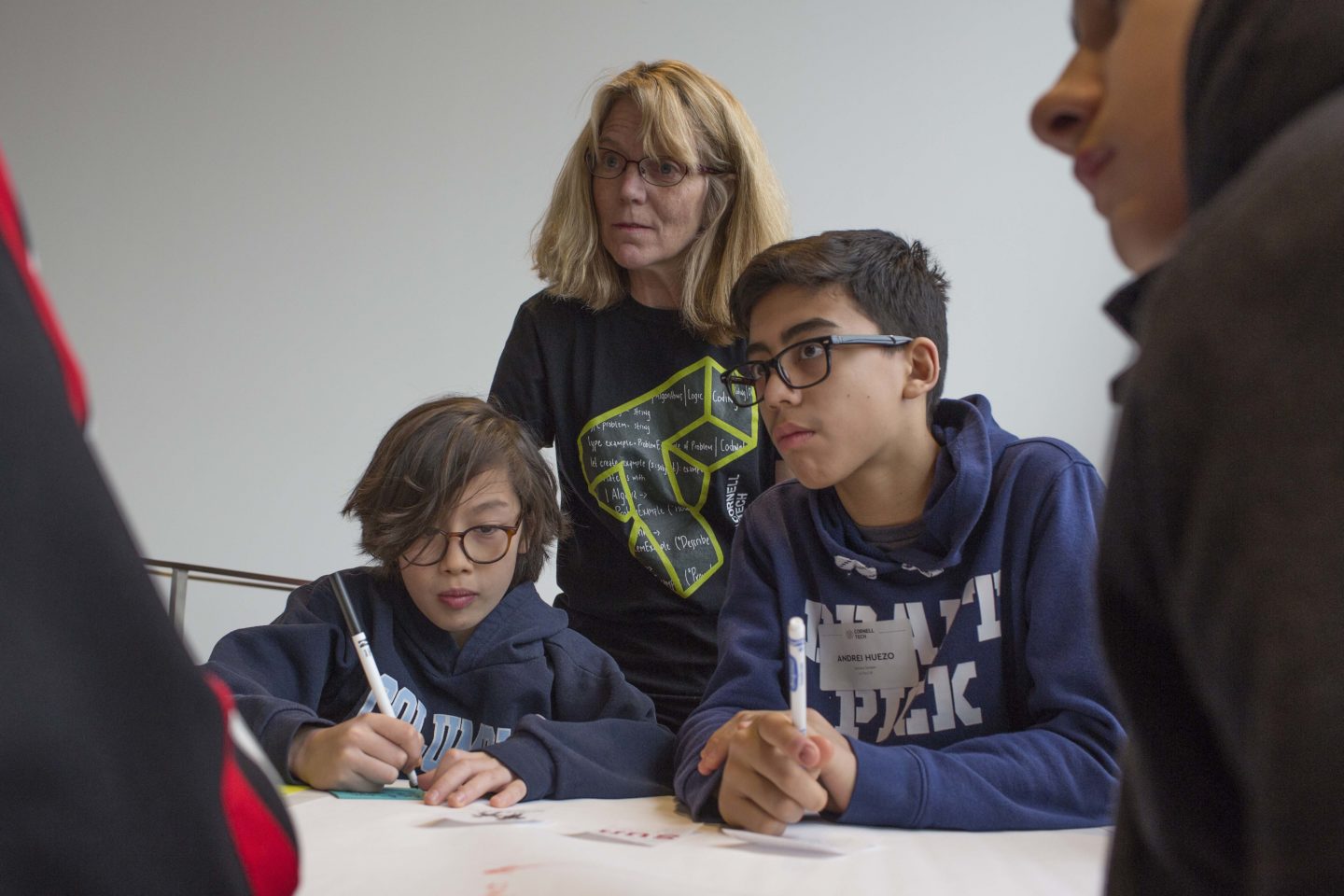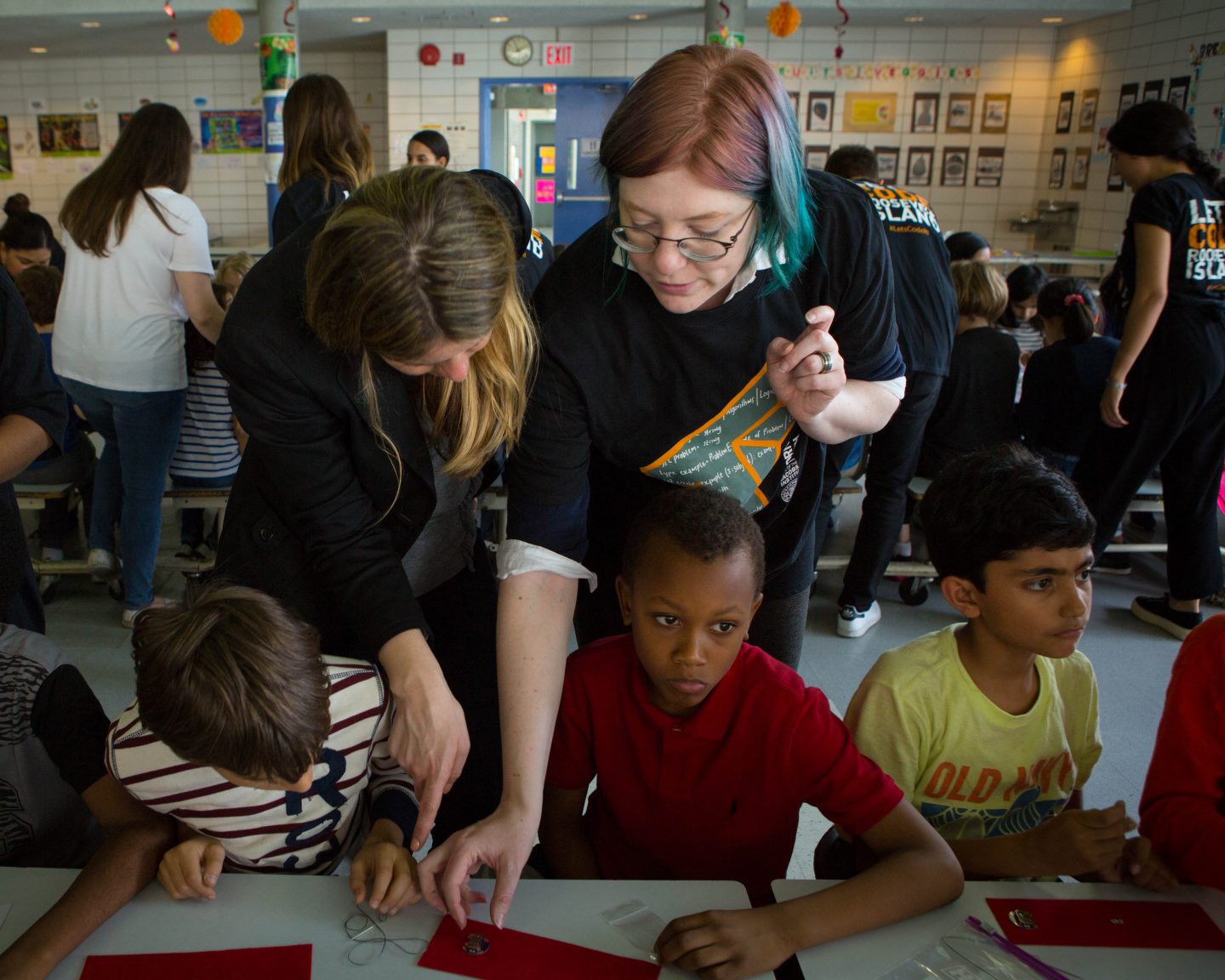









In July, Cornell Tech hosted its second conference on K-12 computing, “To Code and Beyond: Access for All Students” focusing on how educators and the tech community can ensure they are reaching the diverse students found in NYC classrooms.
Co-hosted with the NYC Department of Education, CSNYC and Google, the conference tackled tough questions about how to make tech accessible to students and learners of all abilities and from all backgrounds.
Dr. Kylie Peppler, associate professor and director of the Creativity Labs at Indiana University, delivered a keynote speech on the use of e-textiles to make circuits, code, and programming accessible to diverse learners.
Peppler emphasized “different materials privilege different learners,” recognizing the ways different audiences perceive the language, representations, and even materials we use to teach tech. In particular, the growing maker movement helps us to reconsider the materials we use in classrooms that can play a key role in getting girls interested in science, technology, engineering, and math.
Peppler outlined eight guiding principles educators should consider when they create learning tools and programs for inclusive tech education:
1. Choose open-ended, personal and aesthetic tools and materials
Choose materials that are not too didactic, such as fabrics and connective thread, that encourage messy creativity. Like adults, students can learn their greatest lessons from their mistakes, and e-textiles are so easy and pleasant to work with students don’t have to fear the consequences of failure.
2. Make design thinking central
Iterative design is really important. Teachers should not prevent mistakes, but instead make them part of the classroom learning environment.
3. Create authentic combinations between STEM and the arts
Creative materials offer a great opportunity for collaboration between artists and computer scientists, but be prepared for the fact that they bring very different thinking and approaches to the work. This kind of collaboration privileges two very different types learners in your classroom, broadening the opportunities for learning.
4. Facilitate easy, but challenging, designs
Use tools that are not just a classroom learning tools, but things that people are actually using in sports, music, fashion, military, and other worlds.
5. Purposefully contrast multiple media, tools, and materials
Use diverse types of tools and materials so that you can easily move from the virtual world to the physical world and back.
6. Involve a range of disciplinary experts
Think about inviting new and diverse groups of speakers and look at new online instructional tools to think about how you can shake things up.
7. Devise new assessments, pedagogy, and learning environments.
How do we take the temperature in the classroom to see if you’re on the right track? We may need to rethink our pedagogy to make sure we teach these things well.
8. Most importantly, document and showcase new work!
Share locally and share globally, in your classroom and online. Letting kids take pride and ownership in what they’ve created will encouraged to do more in the future.
Peppler put words to action the following day, when she led a hands-on e-textiles workshop for 25 NYC teachers. Tee shirts with programmed sensors coming to a classroom near you!





